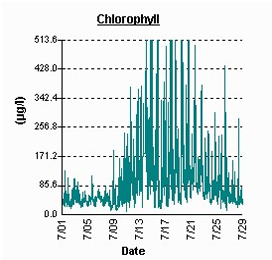|
||
Chattonella cf. verruculosa, a potentially toxic algal species, was present in low cell concentrations in samples collected throughout Marylands Coastal Bays on July 27th. A water sample from the St. Martin River contained the highest cell density (7,632 cells/ml). Routine monitoring on July 18th revealed Chattonella bloom concentrations of 69,695 cells/ml on the Upper St. Martin River (see HAB News from June 26, 2005: Chattonella verruculosa blooms detected in Marylands Coastal Bays). Chattonella is a potentially toxic Raphidophyte (golden brown algae) capable of producing a neurotoxin (brevetoxin) and has been associated with fish kills in other areas of the world. This species was implicated in large fish kill events in Delawares Coastal Bays in 2002; however, no fish kills were associated with Marylands Coastal Bays bloom location at this time. Water quality data collected by MD DNRs continuous monitoring station on the Bishopville Prong a tributary of the St. Martin River, showed elevated concentrations of chlorophyll (an indicator of the amount of algae active in the water) (Figure 1) and declines in dissolved oxygen (Figure 2), indicative of algal bloom activity in the region.
Maryland DNR will continue to monitor this bloom. For up to date information on all of Marylands harmful algal blooms and water quality monitoring results, please visit Eyes on the Bay at www.eyesonthebay.net |


